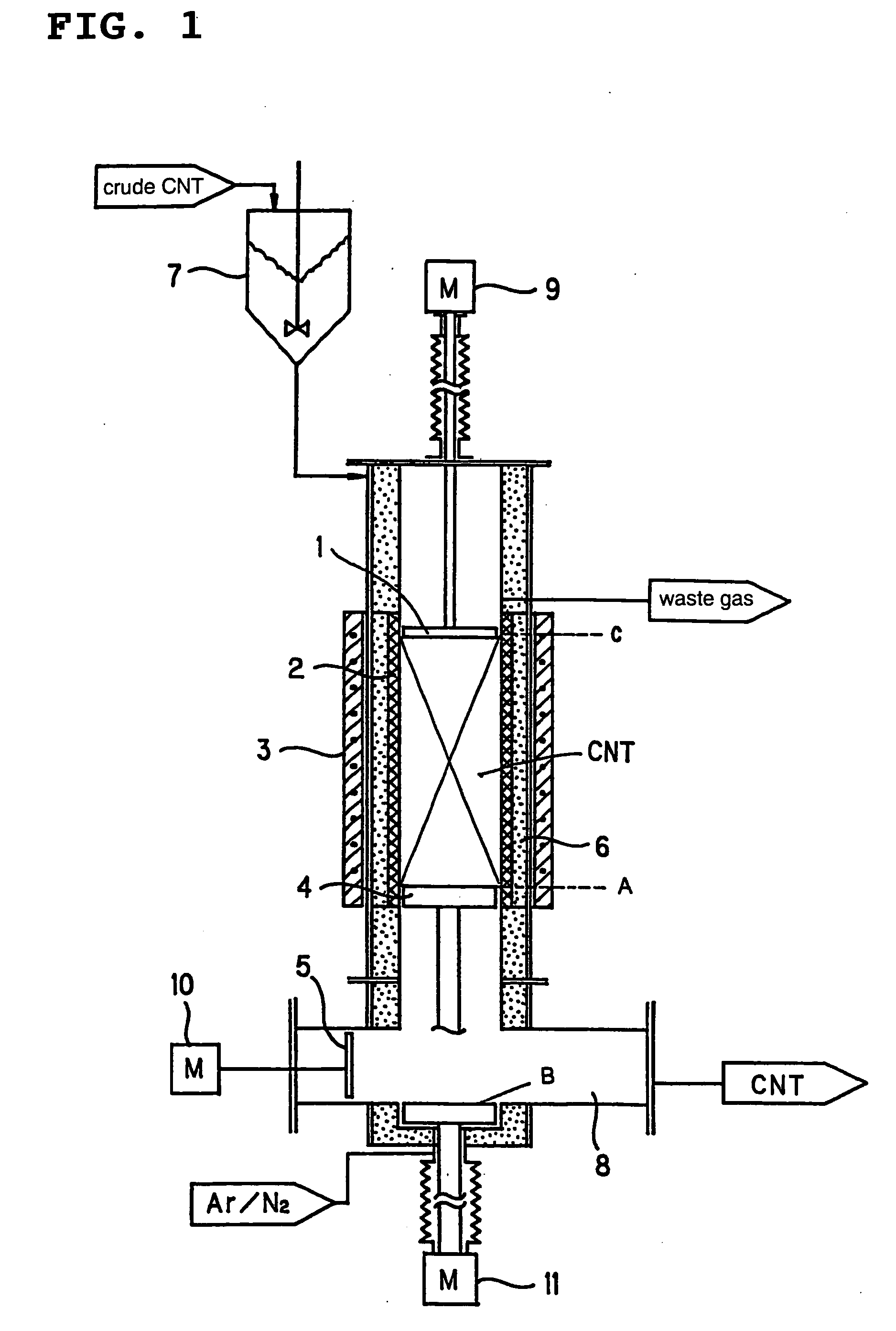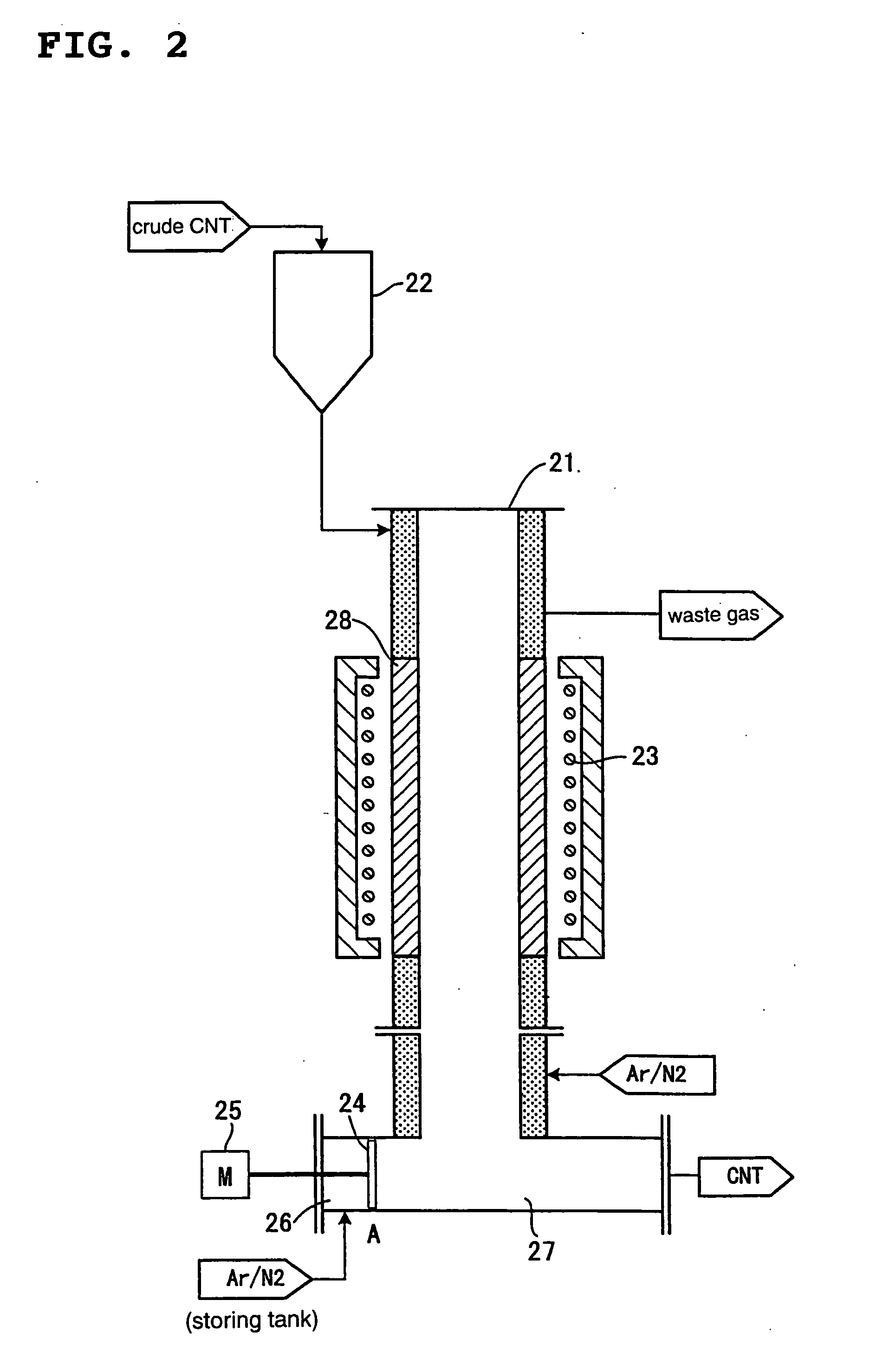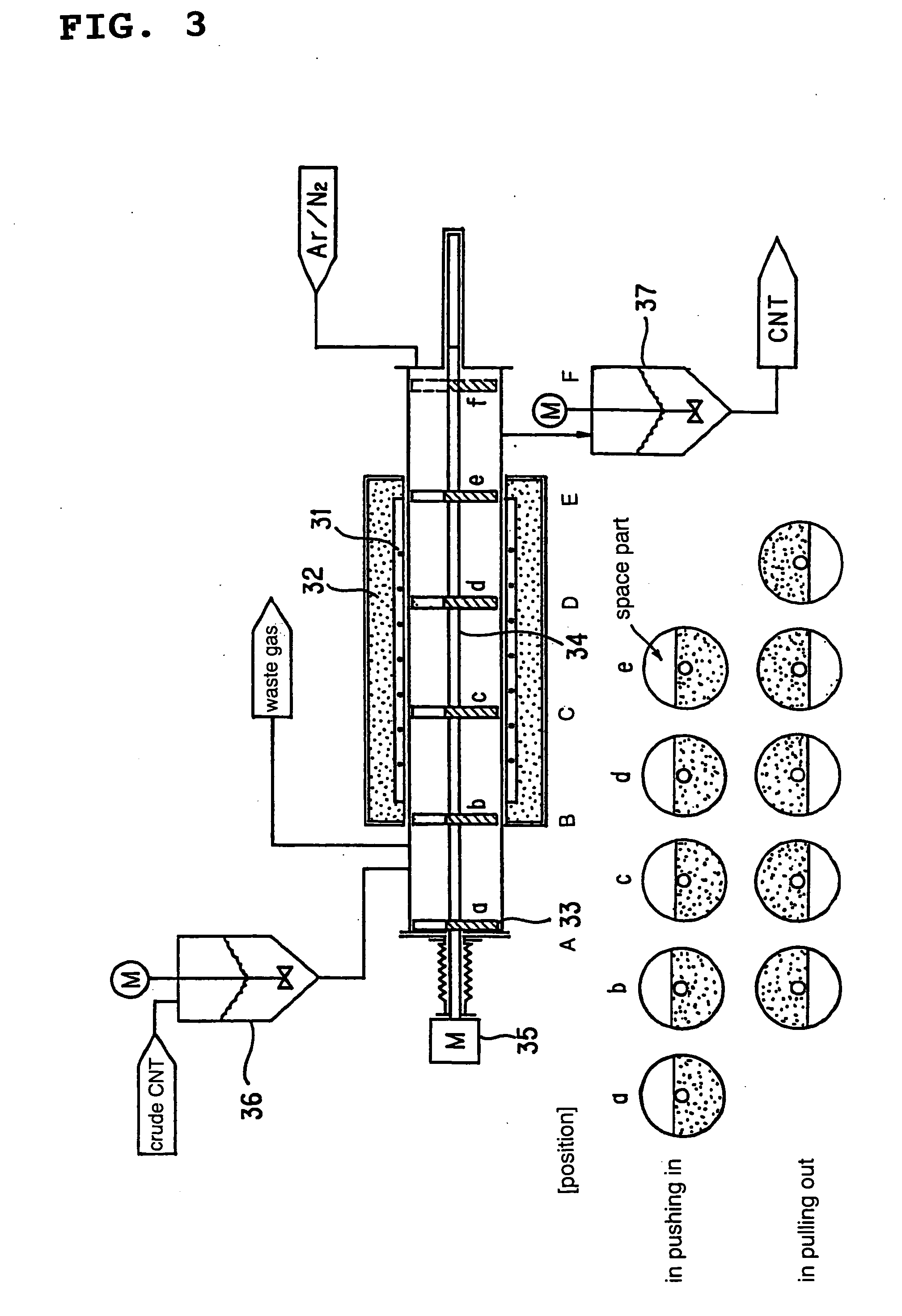Method and apparatus for heat treatment of powder of fine carbon fiber
- Summary
- Abstract
- Description
- Claims
- Application Information
AI Technical Summary
Benefits of technology
Problems solved by technology
Method used
Image
Examples
example 1
Batch Process Equipment
[0049] Carried out by equipment shown in FIG. 1.
[0050] It is a vertical batchwise heating furnace having an inner diameter of 200 mm, and it is equipped at an upper part with a charging device (7) for as-grown fine carbon fibers to be subjected to heat treatment and a driving mechanism (9) for moving upward and downward a push-in plate (1) for pushing in and scratching off the above material. A discharge port for a waste gas is disposed at an upper part of a heating part. Disposed at the lower part is a collecting mechanism comprising a collecting tank (8) for the above fine carbon fibers after subjected to heat treatment, a discharge plate (5) for the carbon fibers subjected to heat treatment and a driving mechanism (10) therefor and a holding plate (4) for preventing the untreated carbon material from leaking and a driving mechanism (11) therefor. The above holding plate is reciprocated alternatively between a position of an end A of a soaking part and a ...
example 2
Continuous Process Equipment
[0073] Carried out using equipment shown in FIG. 2.
[0074] It is a continuous system heating furnace having an inner diameter of 350 mmφ and a heating part length of 1250 mm, wherein it is equipped with a charging device (22) for charging as-grown fine carbon fibers which are compressed and then crushed and a waste gas-discharging device at the upper part, and the surrounding gas introduced from the lower part of the equipment is discharged from the waste gas-discharging device. Disposed at the lower part is a collecting device comprising a collecting part (27) for the above carbon fibers after subjected to heat treatment, a discharging plate (24) for the above powder subjected to heat treatment and a driving device (25) therefor. A surrounding gas-feeding device is present at a driving device side (26) of the discharging plate (24), and when the discharging plate is in the position of A, a pressure in the inside of a chamber on the side (26) is set up ...
example 3
Semi-Batch / Continuous Process Equipment
[0083] Carried out using equipment shown in FIG. 3.
[0084] It is a lateral batchwise heating furnace having an inner diameter of 200 mm, and push-in plates (33) are mounted on a movable shaft (34) disposed in a longitudinal direction of the furnace. This push-in plate has a notch part in a radius direction and assumes a structure in which it does not completely shut up a conduit. In the present example, a structure in which a segment of a circle is cut out has been assumed as shown in FIG. 3. The number of the push-in plates may be set up according to a push-in distance, and five plates of (a), (b), (c), (d) and (e) have been set in the present example. Further, the push-in plates are fixed on the movable shaft, and the fixing directions are set up so that the notch parts of the respective plates are overlapped when observing them along the shaft. The above movable shaft is prepared from a graphite material. The positions of the respective pu...
PUM
 Login to View More
Login to View More Abstract
Description
Claims
Application Information
 Login to View More
Login to View More - Generate Ideas
- Intellectual Property
- Life Sciences
- Materials
- Tech Scout
- Unparalleled Data Quality
- Higher Quality Content
- 60% Fewer Hallucinations
Browse by: Latest US Patents, China's latest patents, Technical Efficacy Thesaurus, Application Domain, Technology Topic, Popular Technical Reports.
© 2025 PatSnap. All rights reserved.Legal|Privacy policy|Modern Slavery Act Transparency Statement|Sitemap|About US| Contact US: help@patsnap.com



